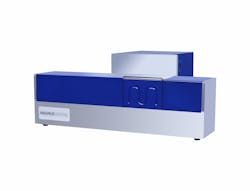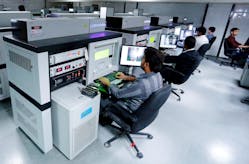RAHUL GAYWALA
Diamonds are one of the most precious and loved materials of all. Every natural diamond was formed long before dinosaurs roamed on Earth, with the youngest diamond believed to be about 900 million years old and the oldest about 3.2 billion. Symbolizing power, strength, and beauty, this material—the hardest in the world—was primarily obtained as a rough stone from India. Modern diamond mining as we know it started in the 19th century in South Africa. At present, around 80% of rough diamonds are obtained from mines located in Botswana, South Africa, Russia, Angola, Namibia, Australia, and the Democratic Republic of Congo.
Rough diamonds are sorted on the basis of their natural characteristics, like shape, size, color, cut-ability, and quality, before being used as industrial diamonds or as gem diamonds. They pass through a series of processes, including planning and marking, cleaving or sawing, bruting or girding, and polishing. The planning part was formerly done manually by skilled workers who would examine the rough diamond for inclusions and other impurities or defects. Depending on this, they planned to get the best part out of it in terms of weight and clarity, and placed marks on it with a pen to guide the following process. Another manual process was kerfing of the marked rough stone, wherein the sharp edge of a diamond was used to cut the stone. With the invention of some advanced tools, sawing or cleaving was done by diamond powder-coated blades. Bruting is the process in which two diamonds are set on opposite axels and their vigorous rotation gives a rough shape to pre-planned stone. The final stage involves making different facets and polishing the diamond.
Diamond processing technology shift
Although the roots of changing the styles and equipment used in diamond processing techniques were sowed in the early 17th century, the older techniques were practiced until the dawn of the 21st century, when a new era of laser technology was waiting to reform and reshape the future of the diamond industry worldwide. In the 20th century, Albert Einstein established the theoretical foundations for the laser in 1917 and Theodore H. Maiman operated the first functioning laser in 1960, leading to a wide range of industries all over the world to use laser light in their applications.
Currently, diamond processing is done in approximately 30 countries, but it is mainly concentrated in India, Antwerp, Belgium; Johannesburg, South Africa; New York, NY; and Tel Aviv, Israel. China and Thailand are increasingly active centers, too. India processes approximately 55% by value of the world's diamonds, from which almost 85–90% of gem diamonds are processed in Surat (situated on the western coast of India).
Today, Surat is renowned for numerous large and small factories equipped with sophisticated high-tech machines that use advanced technology on par with—or even better than—other cutting centers worldwide. Indian diamond manufacturers are always eager and enthusiastic to absorb the newest technology into their factories, are continually on the lookout to upgrade their manufacturing processes, and train their workers ahead of the rest of its competitors. Adaptation to new changes is driving the success and development of the diamond cutting and polishing sector there. As of today, around 10,000 diamond processing and trading units are spread across the state of Gujarat, and Surat alone houses more than 5000 units.
Even though India—especially Surat—claims to be the largest producer of polished diamonds, the advanced machinery used for this industry was primarily imported from other countries. These machines proved to be too costly and too complicated to operate by Indian manufacturers and artisans, the majority of whom were not literate. Taking into consideration the pros and cons of imported diamond cutting machines, Sahajanand Technologies Pvt. Ltd. set up its own R&D team to manufacture low-cost and user-friendly diamond cutting machines in Surat. Previous machines that were available for approximately $142,000 were now being made available at a low cost—around $38,000. With the introduction of laser technology, conventional machines were replaced by advanced laser cutting machines. Manual planning and marking, and the conventional machines previously used for diamonds processing, were replaced with software-based, laser-equipped units. The latest-generation, laser-equipped Magnus Ace diamond planning machine from Sahajanand Technologies proved to be more precise and effective; once a rough diamond is placed in this machine, it creates a 3D image of it and then carries out the first step of planning (FIGURE 1).
How laser diamond cutting works
First, the rough diamond is measured and an AI-assisted planning process then guides the user for optimal yield from the diamond. Then, it obtains a clear picture regarding the weight, shape, and clarity of the proposed polished diamond. Specialized software gives the operator options to select the shape of the diamond, depending on elimination of inclusions, and displays its market value onscreen. In the next step, the numbers of sides and percentage of sawing and banding are selected, enabling optimal safety and finalizing minimum weight loss. The operator clicks a button and the perfect laser sawing gets started. After completion of the above process, the next step is to cut the rough diamond according to the plan. Laser cutting machines from Sahajanand Technologies are among the most preferred machines for this job, as these are compatible with former planning machines. These laser cutting machines take care of the sawing, shaping, blocking, and 4-in-1 process (a.k.a. 4P), and cut pre-planned rough diamonds (FIGURE 2). The final result is always appreciable compared to what one gets from the conventional method of diamond planning and cutting.The notable features of laser-equipped diamond planning and cutting machines are:
1. They are highly precise, accurate, and repeatable;
2. They are great time-savers as a single planning machine, and up to five machines can be used in line to increase productivity;
3. They reduce the requirement of scarcely available skilled manpower due to user-friendliness and easy operation;
4. They reduce human errors to almost zero;
5. They reduce overall material loss during cutting to 1% or less compared to 8% with conventional methods; and
6. They are highly robust and require very low maintenance cost.
Conclusion
Sahajanand Technologies alone has supplied more than 1000 units of its laser machines performing in domestic and international markets. The reason for this may be the clusterization of the diamond industry in India. More laser machines are introduced to the diamond industry every year, which has undoubtedly influenced the overall development and growth of the diamond industry positively. With the help of these advanced technologies, a refreshed, more dazzling variety of diamonds are made available to diamond lovers.
RAHUL GAYWALA ([email protected]) is with Sahajanand Technologies; Surat, India; www.sahajanand.co.in.

